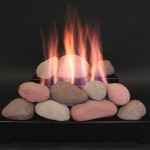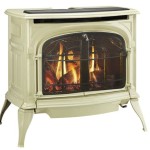Should You Put Fireplace Ashes In Your Garden?
Fireplace ashes are a byproduct of burning wood, and they can be a valuable addition to your garden. However, it is important to understand the potential benefits and drawbacks of using fireplace ashes in your garden before you do so.
Benefits of Using Fireplace Ashes in Your Garden:
- Fireplace ashes can help to improve soil drainage. Ashes are a good source of potassium, which helps to break down clay particles and improve the drainage of water through the soil. This can be especially beneficial in gardens that are prone to waterlogging.
- Fireplace ashes can help to raise the pH of acidic soil. Ashes are alkaline, which means that they can help to neutralize the acidity of soil. This can be beneficial for plants that prefer a more alkaline soil pH, such as roses and tomatoes.
- Fireplace ashes can add nutrients to the soil. Ashes contain a number of essential plant nutrients, including potassium, phosphorus, and calcium. These nutrients can help to improve the overall health and vigor of your plants.
Drawbacks of Using Fireplace Ashes in Your Garden:
- Fireplace ashes can contain heavy metals. Wood smoke can contain heavy metals, such as lead and arsenic, which can be harmful to plants and humans. If you are concerned about the presence of heavy metals in your fireplace ashes, it is best to have them tested before using them in your garden.
- Fireplace ashes can be too alkaline for some plants. While fireplace ashes can be beneficial for plants that prefer a more alkaline soil pH, they can be harmful to plants that prefer a more acidic soil pH, such as blueberries and azaleas.
- Fireplace ashes can be dusty and difficult to work with. Ashes can be dusty and difficult to work with, which can make them a nuisance to use in the garden.
How to Use Fireplace Ashes in Your Garden:
If you decide to use fireplace ashes in your garden, it is important to do so in moderation. Ashes should be applied at a rate of no more than 20 pounds per 100 square feet of garden space. Ashes should be spread evenly over the soil and then worked into the top 6 inches of soil. Ashes should not be applied directly to plants, as this can burn the roots.
It is also important to note that fireplace ashes should not be used in gardens that are used to grow vegetables that will be eaten raw. This is because ashes can contain harmful bacteria and other contaminants.

Are Fireplace Ashes Good For The Garden Vertical Chimney Care

Fireplace Ash Can Be A Boost For Garden Soil But Cautious The Seattle Times

10 Fantastic Uses For Fireplace Ash Full Service Chimney

Is Firepit Ash Good For Grass

Yearly Additions Of Fireplace Ash To Garden Can Cause More Harm Than Good Triblive Com

What To Do With All That Ash Prince Frederick Md Chesapeake Chimney

How To Dispose Of Fireplace Ash And Reuse It White Glove Chimney

How Do I Apply Firepit Ash To My Garden

Give Your Plants A Boost With Fireplace Ash Plus More Winter Garden Advice The Seattle Times

Proper Ash Removal Nashville Tn Ashbusters








